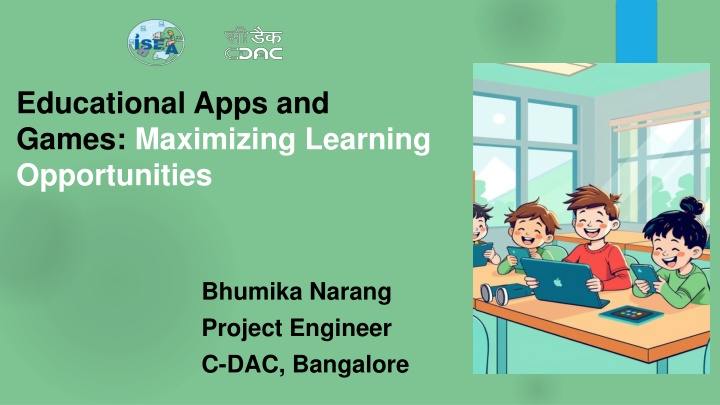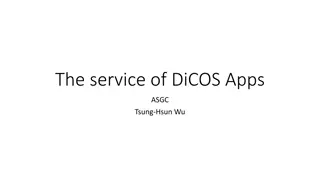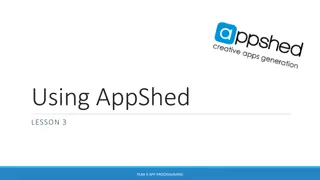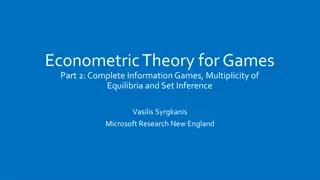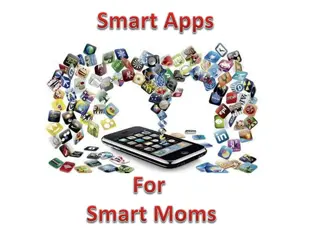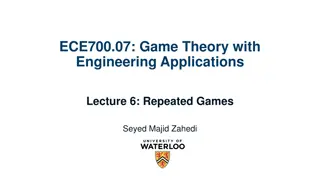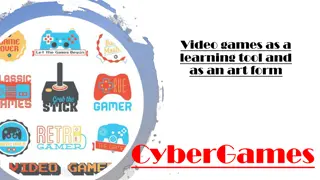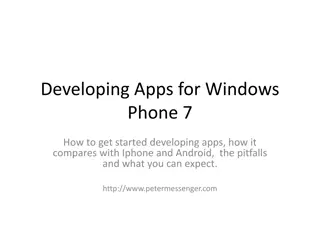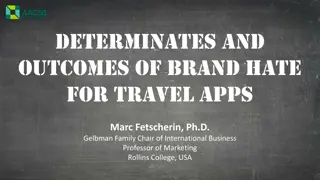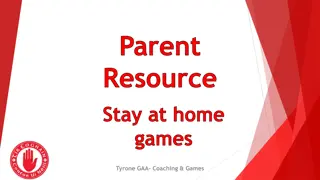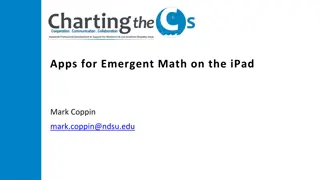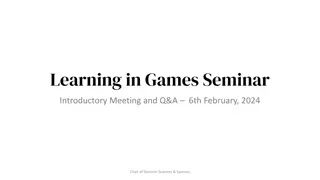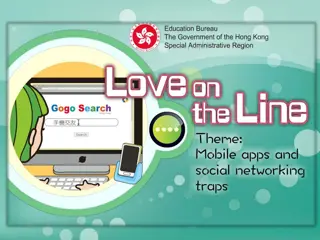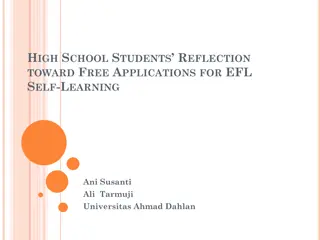Maximizing Learning Through Educational Apps and Games
Enhance learning opportunities through educational apps and games with benefits such as personal growth, cognitive development, and engagement. Explore how modern education systems differ from traditional approaches, focusing on dynamic syllabi and student-centered learning paths. Discover the importance of curriculum planning and design in integrating AI tools and real-time updates. Engage learners through gamification and interactive elements like quizzes, game narratives, and group projects for a comprehensive and enriching educational experience.
Download Presentation

Please find below an Image/Link to download the presentation.
The content on the website is provided AS IS for your information and personal use only. It may not be sold, licensed, or shared on other websites without obtaining consent from the author.If you encounter any issues during the download, it is possible that the publisher has removed the file from their server.
You are allowed to download the files provided on this website for personal or commercial use, subject to the condition that they are used lawfully. All files are the property of their respective owners.
The content on the website is provided AS IS for your information and personal use only. It may not be sold, licensed, or shared on other websites without obtaining consent from the author.
E N D
Presentation Transcript
Educational Apps and Games: Maximizing Learning Opportunities Bhumika Narang Project Engineer C-DAC, Bangalore
Personal Growth Cognitive Benefits Necessity of Learning Career Advancement Social and Emotional Benefits Health and Well-Being Economic Advantages
Traditional Educational System Teacher-Centered Approach Fixed Syllabus and Content Limited Resources and Flexibility Periodic exams
Traditional Educational System Lecture Formats Facts Memorization No real world connection Disengagement Lack of motivation Poor Academic Results
Modern Education System Dynamic Syllabus and Frequent Updates Student-Centered and Flexible Learning Paths Diverse Resources
Curriculum Planning and Design Personalized Learning Paths and Adaptive Curriculum Data-Driven Decisions and Predictive Analytics Integration of AI Tools and Real-Time Updates
Educational Apps and Games Engagement Instant Feedback Motivation Availability Self Pace based Learning
Benefits of Educational Apps and Games Other Engagement and Motivation 25% 10% Skill Building 20% Accessibility 20% Personalization 25%
Engaging Learners through Gamification Points & Rewards Challenges & Quests Interactive Storytelling
Incorporating interactive elements in learning Quizzes and Polls Roll-Playing Scenarios Game Narratives Game-Based Learning Discussion Forums Group Projects Peer Reviews Teamwork Skills
Developing Critical Thinking Skills Problem-Solving Interactive puzzles and challenges reasoning Decision-Making Weigh the evidence and Alternatives Logical Reasoning logic and deductive
Personalized Learning Experiences Adaptive Learning Difficulty level based on individual performance. Personalized Feedback Real-time feedback on progress and areas for improvement. Learning Paths Personalized learning pathways based on student needs.
Accessibility and Inclusivity Subtitles and Audio Descriptions Enhance accessibility for students with hearing impairments. Alternative Controls Provide options for students with physical disabilities to interact with apps. Multilingual Support Accessible to students from different language backgrounds
Integrating Apps and Games in Classroom Planning & Selection Carefully choose apps and games that align with curriculum goals Implementation & Differentiation Integrate apps into lessons and provide support for diverse learners Assessment & Reflection Evaluate the effectiveness of apps and make adjustments as needed
Future Trends Virtual Reality Immersive Learning Immersive and engaging learning experiences, Enhanced Realism AI-Powered Learning Personalize learning paths and tailored support Advanced Gamification Sophisticated and personalized Cloud-Based Learning Access to educational resources
Limitations Quality and Content Concerns Technological Dependence Privacy and Data Security Lack of Personalization Lack of Socialization
Conclusion Harnessing the Potential Addressing Challenges Balancing Innovation and Pedagogy Focus on Outcomes
